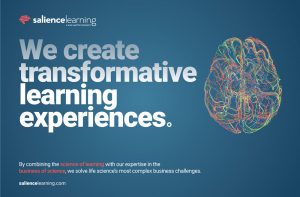Driving Uptake of New Products and Processes
Selling Skills – By Steven Boller
Why do so many organizations struggle to manage change?
Our organizations are under constant pressure to innovate. In all industries, new product offerings are essential to gaining market share and beating the competition. In the life sciences, it’s about more than that: New treatments and devices improve and save lives.
Internal processes and procedures can’t stand still, either. The competitive landscape and regulatory environment are always shifting. Change is an essential part of a successful organization.
If this is true, why do so many organizations struggle to manage change?
 Thomas J. Steenburgh, a marketing professor at the University of Virginia Darden School of Business, identified the central problem in a recent Harvard Business Review podcast: Organizations spend a lot of time and money on research and development, then fail to enable their people to put the new innovations into practice.
Thomas J. Steenburgh, a marketing professor at the University of Virginia Darden School of Business, identified the central problem in a recent Harvard Business Review podcast: Organizations spend a lot of time and money on research and development, then fail to enable their people to put the new innovations into practice.
Steenburgh witnessed this challenge firsthand during his time at Xerox. They were among the first to develop technologies such as the computer mouse and the graphical user interface, yet they were unable to commercialize them. Xerox was deeply entrenched in selling copiers and toner and could not get their salesforce to make the shift. Training was an afterthought and without strategic direction,
managers prioritized the tried and true.
As a trainer, you likely understand this problem very well. Even the most innovative organization in the world will fail to make change happen unless it enables its people to operationalize and commercialize its innovations.
Here are a few ideas to consider the next time you are tasked with driving uptake around a new product or business process:
 Build a bridge with your product management function and company leaders. When training leaders are too far downstream to have an impact on launch planning, the training is less likely to connect with overall company strategy. The training plan should be considered during product launch planning, not as a separate phase. Training leaders should see themselves as advocates, ensuring learners have the time and support they need to build the necessary knowledge and skills.
Build a bridge with your product management function and company leaders. When training leaders are too far downstream to have an impact on launch planning, the training is less likely to connect with overall company strategy. The training plan should be considered during product launch planning, not as a separate phase. Training leaders should see themselves as advocates, ensuring learners have the time and support they need to build the necessary knowledge and skills.- Listen to your learners. Take time to gather input from target learners who will be impacted by the new product or business process. With a bit of lead time, it is useful to collect data via a mix of methods such as focus groups, interviews, surveys and job task analysis. When time is limited, including one or more target learners in the training design meeting is highly effective. Design thinking tools like empathy maps and learner personas can be used in the design meeting to better understand how the new product or process will impact target learners.
- Plan a journey, not training events. Your training design should consider the entire learner journey, and not just the isolated training events that will occur. Take the time to map out all the activities and responsibilities your target learners must attend to and see where training and performance support could fit. This will also help you identify what communication touch points will be necessary to keep learning top of mind.
Even the most innovative organization will fail to make change happen unless it enables its people.
Steven Boller is the director of marketing and business development at Bottom-Line Performance. Email Steve at Steve@bottomlineperformance.com.









